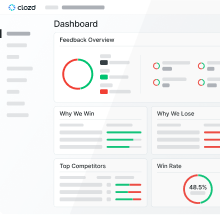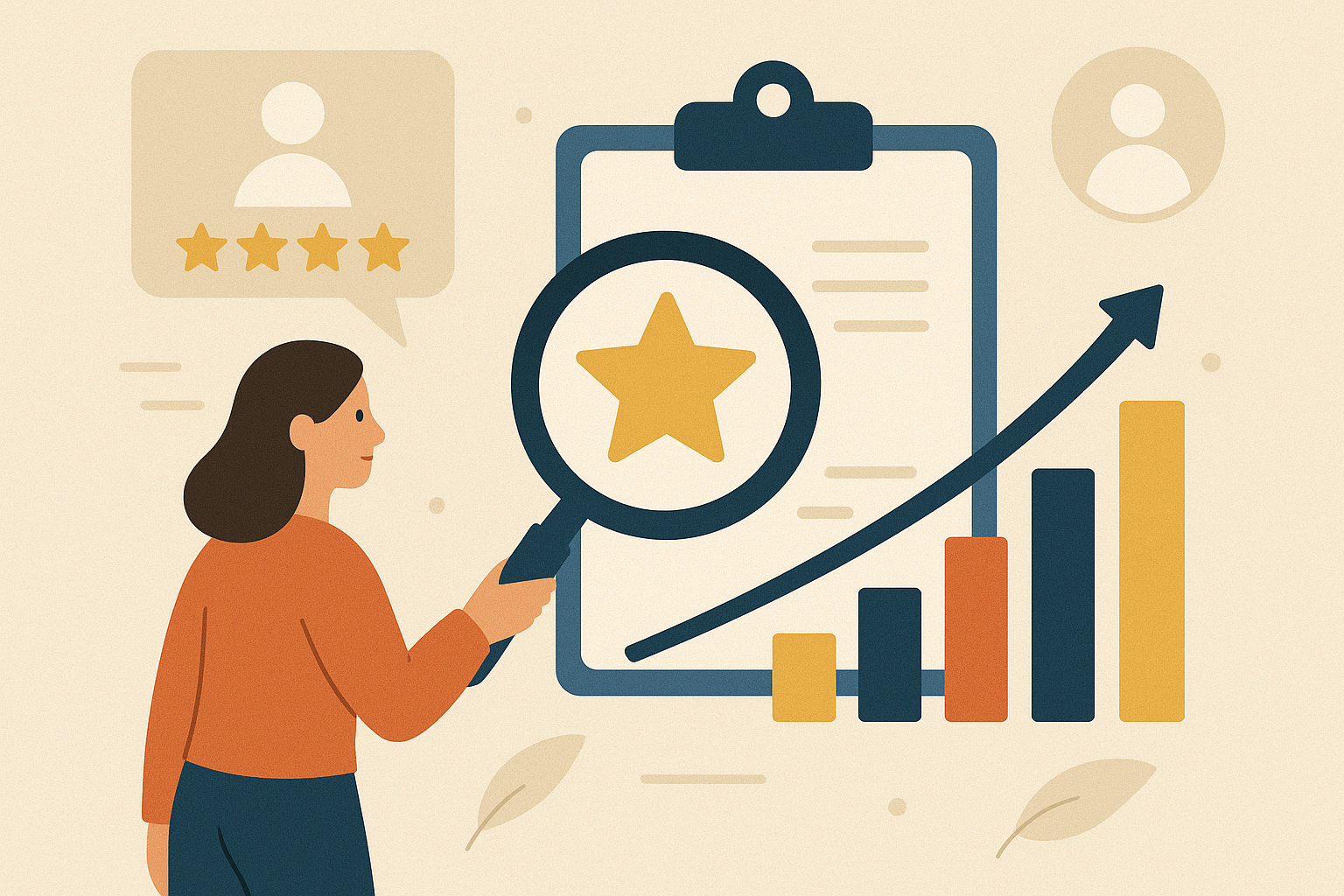Clearbit has taken a product-centric approach to win-loss analysis, with a primary focus on increasing both product adoption and customer retention. While product-led change takes time, Clearbit has already launched two new products in 2023 and continues to rely on unbiased and transparent customer feedback—delivered by Clozd—to identify specific pain points as they rebuild their product roadmap.
Building a data-driven product roadmap
Many companies use win-loss analysis as a way for their sales and marketing teams to uncover hidden revenue opportunities.
Clearbit is taking a different approach.
“I think our use case, or at least the way we've used Clozd data, is a little bit unique,” said Rebecca Yang, Clearbit’s VP of engineering. “Others may see it as a way to make sure they’re doing a good job with customer success and relationship management, but I view it through a product lens.”
Rebecca leads Clearbit’s engineering, product, data science and analytics, and technical support teams, and these days—amidst macro-economic turmoil, especially for tech companies—one objective hovers above the rest: to reduce customer attrition by creating the best possible product experience.
Clearbit is several months into the difficult journey of rebuilding their product roadmap, and Clozd has become a critical tool for Rebecca as she prioritizes projects based on the win-loss data that reinforces them.
“It's been great,” she said. “If you look at our product roadmap, huge swaths of it have been dictated by the information we claim from reading Clozd reports and looking at the themes and customer pain points. I was reading a Clozd report today that reviewed the main reasons our customers churn, and we've either fixed or are in the process of fixing a bunch of them."
Clearbit has already launched two new products in 2023: AI-powered categorization, which optimizes lead scoring, routing, and analytics processes for B2B go-to-market teams; and Global Coverage, which enables Clearbit to identify and enrich any company or contact—from any country, in any language.
The development of these products—which have dramatically improved Clearbit’s coverage across EMEA, APAC, and Latin America—was heavily informed by win-loss data.
“It’s scary to just completely change your track and go after something else,” Rebecca said. “And there was a part of me that was like, ‘This is the most validated roadmap I've ever pursued.’ That was my honest feeling. But it still felt uncertain because you just never know. So I'm glad it worked, and I'm glad this process has been validated. I'm going to keep doing it.”
Delivering valuable, objective product validation
Customer feedback has been an important part of Clearbit’s product development, and one benefit of partnering with Clozd is that customers and prospects are consistently more transparent when talking to an objective third party.
Likewise, Clozd program managers don’t have the same agenda as sales reps, marketing managers, and product designers when they reach out to buyers.
“I think the story in my head is that our customers are more honest with someone who isn't with Clearbit because they don't have to worry about hurting our feelings,” Rebecca said.
Having a high level of objectivity is a priority for Clearbit’s team as they seek to design and validate products that will actually help meet the needs of their customers. Doing that at scale—and working with a number of different stakeholders who each have different perspectives and biases—can be especially difficult.
“As an executive or someone who's overseeing a larger portion of the product surface area, this is really, really valuable for me,” Rebecca said. “As much as I want to believe that everyone on my team is really unbiased, I think people tend to have things that they're excited about—things that they want to validate and might not be looking at the data with the same level of objectivity. So what's really nice about having a third party who's handling all of this is I don't have to worry about that. I know there's objectivity.”
Having confidence in that feedback from Clozd is even more important because the consequences of making the wrong product decisions are long-lasting.
“This feedback is obviously valuable when you're evaluating how your sales team is doing, but oh my gosh, making a bad decision is so expensive for our product team because of just how long that bad decision can cascade,” Rebecca said. “Especially on the product side, the work we do today takes a long time to actually manifest into retention or new business. It's why velocity and shipping matter so much—because it takes time to change perception and change hearts and minds in the market.”
Setting their sights on reducing churn
Rebecca’s hope is that using win-loss data as a guide for product development and validation will help Clearbit increase buyer empathy and boost customer retention.
“I think a lot of companies are dealing with challenges with retention right now,” she said. “But from my perspective, it's like, yeah, the market sucks and there's going to be things that are outside of our control. This is so within our control, and it helps.”
While there are no quick fixes, Clozd has helped Rebecca identify specific pain points that have kept some of Clearbit’s customers from adopting their product. It’s also given her a better view into exactly why customers churn.
“We were able to get to the core of some issues that current customers were having that were causing them to not renew,” she said. “And what was really interesting is that we saw those same issues with net new deals, so it validated that these were important problems on the product side that needed attention.”
Just like products take months, or even years, to develop, building and maintaining customer relationships is also painstaking and time-intensive—and the results of those efforts are not always immediately evident.
That said, thanks in large part to their continued reliance on win-loss feedback and data-driven validation, Clearbit is beginning to see significant improvement in their churn rates.
“What we’ve seen is just, quarter over quarter, a massive improvement in retention,” Rebecca said. “Greater than 10 percent GRR improvement quarter over quarter. And I mean like an actual 10 percent jump—not like 10 percent improvement over the previous GRR. And additionally—this is anecdotal because we don't have enough volume to say for sure—but anecdotally, the entire exec team reviews every single closed interview, and we’ve seen these pain points show up less and less in the interview, which is awesome. It means that the work we're doing is noticed and that our customers are realizing the attention we're paying to these problems.”











.svg)










.svg)

.svg)




